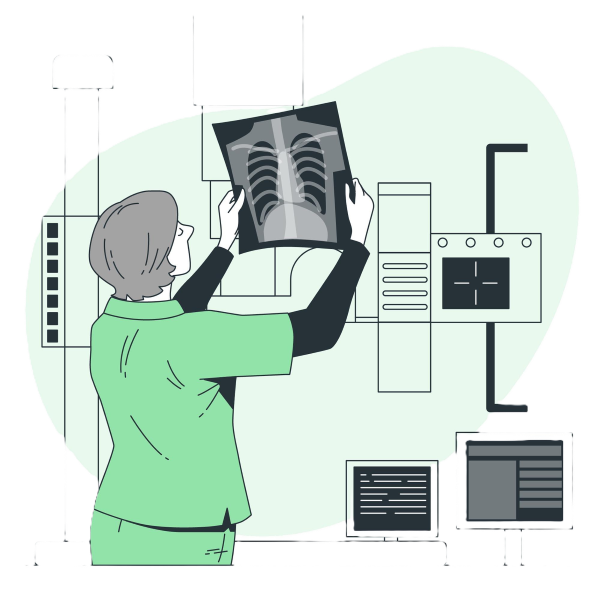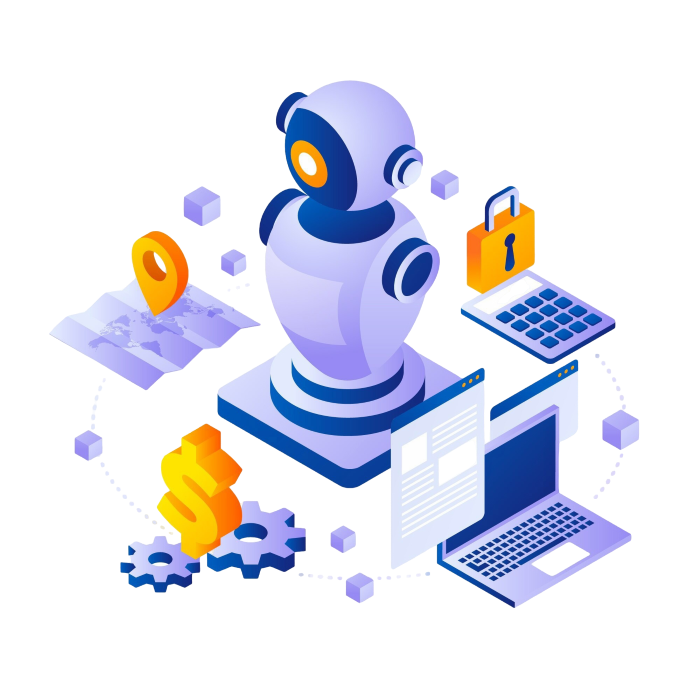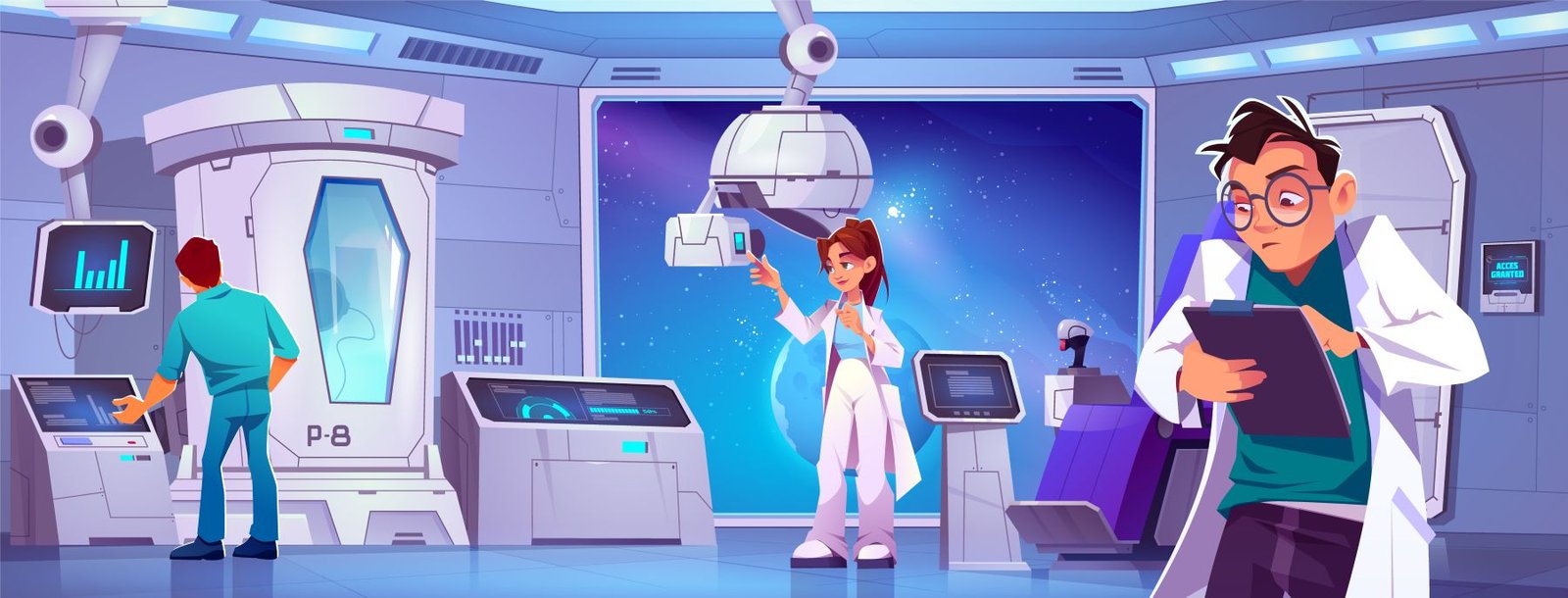In a bustling metropolitan hospital, a radiologist named Dr. Maya Singh begins her day by reviewing patient X-rays. Overwhelmed by the volume of images needing analysis, she turns to an AI-powered tool that instantly highlights anomalies in scans. Maya marvels at the precision—it’s saved her hours and caught subtle signs of disease that even experienced eyes might miss.
This is Vertical AI in action, not just another general-purpose algorithm but a finely tuned system designed specifically for healthcare diagnostics. It’s a story being repeated across industries, where businesses and professionals are leveraging AI customized to meet their unique needs.
On This Page
Table of Contents
While General AI serves broad, multi-domain purposes—think chatbots or autonomous vehicles—Vertical AI specializes. It’s the custom made suit of the AI world, tailored specifically to an industry’s needs. Vertical AI combines the domain expertise of a sector with advanced machine learning models to create solutions that are not only efficient but deeply relevant.
What Is Vertical AI?
Unlike General AI, which operates across diverse domains—like chatbots answering any kind of question—Vertical AI narrows its focus. It’s built with domain-specific expertise, integrating industry nuances and data for unparalleled precision.
For instance:
A healthcare AI system could assist radiologists in detecting anomalies in X-rays.
A retail-focused AI might optimize inventory management by predicting consumer behavior.

Take Sarah, the manager of a busy e-commerce platform. She noticed her inventory system often failed to keep up with consumer demand spikes during holiday seasons. She adopted a Vertical AI solution tailored for retail, which analyzes shopping trends and predicts demand in real time. Within months, her stockouts decreased by 30%, and sales soared.
Key Characteristics of Vertical AI:
- Domain-Specific Data: Built on datasets unique to an industry, ensuring accuracy and relevance.
- Customized Algorithms: Tailored models designed to address industry-specific problems.
- Scalability Within the Vertical: Solutions that grow and adapt to meet the evolving needs of a specific sector.
The Rise of Vertical AI: Why Now?
2020s: The Age of Data Explosion
The world generates 2.5 quintillion bytes of data daily. But Sarah realized that her retail data wasn’t being used optimally by generic AI systems. She needed a solution built for retail—something that understood not just sales but her industry’s seasonality, regional trends, and customer behaviors.
This scenario reflects a larger trend: businesses seeking precision over generalization.
Why Vertical AI Is Rising:
- Big Data Availability: Industries produce vast, structured datasets ready for AI training.
- Demand for Relevance: Generic solutions often miss the mark for niche industries.
- Competitive Edge: Companies adopting Vertical AI outpace competitors by providing better, faster solutions.
Insight: A 2024 study by PwC found that 58% of businesses implementing Vertical AI reported a significant increase in ROI compared to those using general AI solutions.
Key Applications of Vertical AI Across Industries
Vertical AI has touched nearly every sector. Let’s explore how it’s revolutionizing industries with case studies and examples.
1. Healthcare: Diagnosing the Undiagnosable
Dr. Maya Singh, our radiologist, wasn’t always a believer in AI. Initially skeptical, she feared that AI might oversimplify the nuances of diagnostics. Then, her hospital implemented an AI system by PathAI, trained specifically to detect early-stage cancer.
In 2022, an AI system developed by PathAI achieved 95% accuracy in detecting early-stage cancer, outperforming human pathologists in several trials.
Applications:
- Medical Imaging: AI identifies anomalies in MRIs and X-rays faster and more accurately.
- Personalized Medicine: Predicting patient-specific drug efficacy based on genetic data.
- Telemedicine: Virtual consultations enhanced by AI-driven diagnostics.
Results:
- 95% accuracy in detecting cancer.
- Faster diagnosis, leading to earlier treatments.
Today, Maya sees AI as her trusted assistant, capable of spotting what she might miss.
Applications in Healthcare:
- Medical Imaging: Detecting abnormalities with remarkable precision.
- Personalized Treatments: Tailoring medications based on genetic data.
- Operational Efficiency: Streamlining hospital workflows with AI insights.
2. Finance: Fighting Fraud in Real Time
Meet John, a financial analyst working for a global bank. Fraud detection was a nightmare for his team—reactive rather than proactive. A single phishing scam could cost millions.
According to McKinsey, AI-powered fraud detection systems in banking reduced financial fraud losses by 60% between 2019 and 2024.
The bank adopted a Vertical AI system designed for fraud detection. Within weeks:
- Fraud incidents decreased by 60%.
- Suspicious transactions were flagged in milliseconds.
Applications in Finance:
- Real-Time Fraud Detection: Identifying anomalies instantly. AI identifies suspicious transactions in real time.
- Loan Risk Assessment: Predicting borrower reliability. Predicting loan defaults with unparalleled accuracy.
- Algorithmic Trading: Maximizing returns using AI-based strategies.AI optimizes stock trades using historical and real-time data.
3. Retail: Creating Hyper-Personalized Experiences
Sarah’s retail story is just the beginning. Imagine a customer, Alex, walking into a store. Thanks to Vertical AI, Alex’s preferences—gathered from his online shopping habits—are immediately available to the salesperson. Within minutes, Alex leaves with exactly what he wanted, and Sarah’s store earns a loyal customer.
Amazon uses AI to recommend products, achieving a 35% revenue boost from its recommendation engine.
Applications:
- Demand Forecasting: Predicting product demand to optimize inventory.
- Personalized Marketing: AI tailors email campaigns based on customer preferences.
- Dynamic Pricing: Adjusting prices in real time to match market trends.
- Inventory Optimization: Forecasting trends to minimize stockouts.
4. Agriculture: Feeding Billions with Precision
In a remote farming village, Rajesh worried about his crops. The monsoon was unpredictable, and pests had destroyed last year’s harvest. But a tech startup introduced him to AI-powered drones.
The drones analyzed his fields, predicting irrigation needs and identifying pest infestations early. By the end of the season:
- Rajesh’s yield increased by 20%.
- Fertilizer use dropped by 15%, saving costs and reducing environmental impact.
Applications in Agriculture:
- Crop Monitoring: Using drones and sensors to assess field health.
- Yield Prediction: Forecasting output based on weather and soil data.
- Precision Farming: Reducing waste and optimizing resources.
Benefits of Vertical AI
Why is Vertical AI becoming a cornerstone of industry innovation?
| Benefit | Real-World Impact |
|---|---|
| Higher Accuracy | Specialized training ensures precision in predictions and diagnostics. |
| Efficiency Gains | Automation of repetitive tasks frees up human resources for strategic work. |
| Competitive Advantage | Tailored insights help businesses outperform competitors. |
| Cost Savings | Reduced resource waste, better planning, and fewer errors. |
Example:
A logistics company adopting Vertical AI for route optimization cut delivery times by 25% and fuel costs by 30%.
Challenges in Implementing Vertical AI
Despite its promise, Vertical AI isn’t without challenges.
Real-World Challenges:
Despite its promise, Vertical AI has hurdles.
- Data Challenges:
- Poor data quality can undermine results.
- Industries with sensitive data (e.g., healthcare) face privacy concerns.
- Resource Intensity:
- Developing Vertical AI is expensive, requiring both technical expertise and domain knowledge.
- Ethical Concerns:
- Bias in training data can lead to unfair or inaccurate outcomes.
Mitigation
- Data Privacy: Dr. Maya’s hospital faced regulatory hurdles in using patient data. They solved it by adopting privacy-compliant AI tools.
- Bias in Training: John’s bank struggled initially with bias in its fraud detection algorithm, flagging legitimate transactions unfairly. Retraining the model solved this.
- High Costs: Rajesh’s village pooled resources to afford AI-powered drones, showing how collaboration can overcome barriers.
Key Players and Innovations in Vertical AI
Industry Leaders
- IBM Watson Health: Transforming healthcare diagnostics.
- Bloomberg Terminal AI: Delivering real-time financial insights.
- Blue River Technology: Revolutionizing farming with AI-powered precision.
Startups Making Waves
- Zebra Medical Vision: AI for radiology.
- SentinelOne: Specialized cybersecurity solutions.
Funding for Vertical AI startups reached $30 billion in 2024, reflecting growing demand.
The Future of Vertical AI
As Dr. Maya, Sarah, and Rajesh’s stories show, the future of Vertical AI is about solving real problems with customized solutions.
Vertical AI is at the cusp of a new era. As industries evolve, so will their demands for specialized solutions.
What’s Next?
- Cross-Industry Collaboration: AI systems could link agriculture and logistics to optimize food supply chains.
- Sustainability: Rajesh’s success could inspire large-scale adoption of AI for sustainable farming. Vertical AI will play a key role in achieving global sustainability goals.
- Ethical Development: Governments and businesses will develop regulations to ensure responsible AI use. Frameworks will ensure fairness, privacy, and accountability.

Resolution: A Customized Approach to Innovation
Vertical AI is more than a trend—it’s the future of industry innovation. By tailoring AI solutions to specific challenges, it unlocks efficiencies, accuracy, and insights that general AI cannot achieve. While challenges remain, the potential rewards are immense.
Whether it’s a radiologist diagnosing diseases, a farmer increasing yields, or a retailer optimizing inventory, Vertical AI is proving that customization is key to innovation.
The future is here, and it’s tailored for you.
FAQs
What is Vertical AI, and how does it differ from General AI?
Vertical AI refers to AI systems designed for specific industries, focusing on solving niche problems with high precision. Unlike General AI, which is broad and multi-purpose, Vertical AI incorporates domain-specific data and algorithms tailored to address unique challenges in fields like healthcare, finance, retail, and agriculture.
Why is Vertical AI gaining popularity?
Vertical AI is becoming popular due to:
—Increased availability of industry-specific data.
—A growing demand for customized solutions that deliver higher accuracy and relevance.
—The need for businesses to gain a competitive edge through precise insights and efficiency.
Which industries benefit the most from Vertical AI?
Industries that handle complex, data-intensive tasks benefit significantly from Vertical AI, including:
—Healthcare: For diagnostics, personalized treatments, and operational efficiency.
—Finance: For fraud detection, risk assessment, and algorithmic trading.
—Retail: For personalized shopping experiences, demand forecasting, and dynamic pricing.
—Agriculture: For precision farming, yield prediction, and resource optimization.
Can small businesses use Vertical AI, or is it only for large enterprises?
Vertical AI is increasingly accessible to small and medium businesses (SMBs) due to:
—SaaS (Software as a Service) platforms offering affordable, ready-to-use solutions.
—Industry-specific AI tools that don’t require extensive technical expertise.
—The growing availability of customizable AI APIs and cloud-based tools.
What are the main challenges in implementing Vertical AI?
Common challenges include:
—Data Quality: Ensuring clean, structured, and unbiased data for training AI models.
—Cost: High initial development or adoption costs for AI solutions.
—Ethical Concerns: Issues around bias, privacy, and regulatory compliance.
—Resource Expertise: Finding professionals skilled in both AI and the specific industry.
How does Vertical AI improve operational efficiency?
Vertical AI automates repetitive tasks, enhances decision-making through predictive insights, and reduces errors. For example:
—In logistics, AI optimizes delivery routes to save fuel and time.
—In healthcare, it reduces diagnostic delays by quickly analyzing medical images.
Are there ethical concerns associated with Vertical AI?
Yes, ethical concerns include:
—Bias in AI models: Industry-specific data can sometimes reinforce biases.
—Data privacy: Using sensitive data (e.g., in healthcare or finance) raises regulatory concerns.
—Transparency: Ensuring AI decisions are explainable and accountable.
How does Vertical AI impact employees in traditional industries?
Vertical AI complements human work rather than replacing it. For example:
—Doctors use AI to improve diagnosis accuracy, not to replace their expertise.
—Farmers leverage AI to monitor crops, enhancing productivity without losing control over operations.
In most cases, it automates routine tasks, allowing professionals to focus on strategic or creative work.
Are there any notable success stories of Vertical AI in action?
Yes, here are a few examples:
PathAI: Revolutionized healthcare by achieving 95% accuracy in detecting early-stage breast cancer.
Blue River Technology: Used AI in agriculture to reduce pesticide use by targeting weeds with precision.
Amazon: Implemented AI in retail to boost revenue by 35% through its personalized recommendation engine.
What is the future of Vertical AI?
The future of Vertical AI includes:
Cross-industry applications: Collaborations between sectors (e.g., agriculture and logistics).
Ethical frameworks: Improved regulations to ensure responsible AI development.
AI-powered sustainability: Helping industries achieve environmental and social sustainability goals.















Very helpful